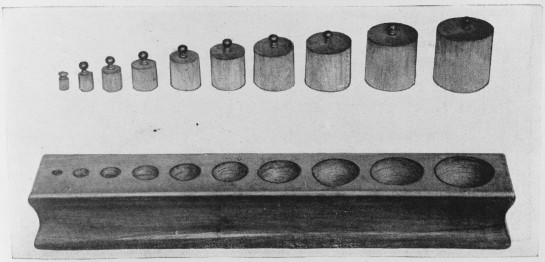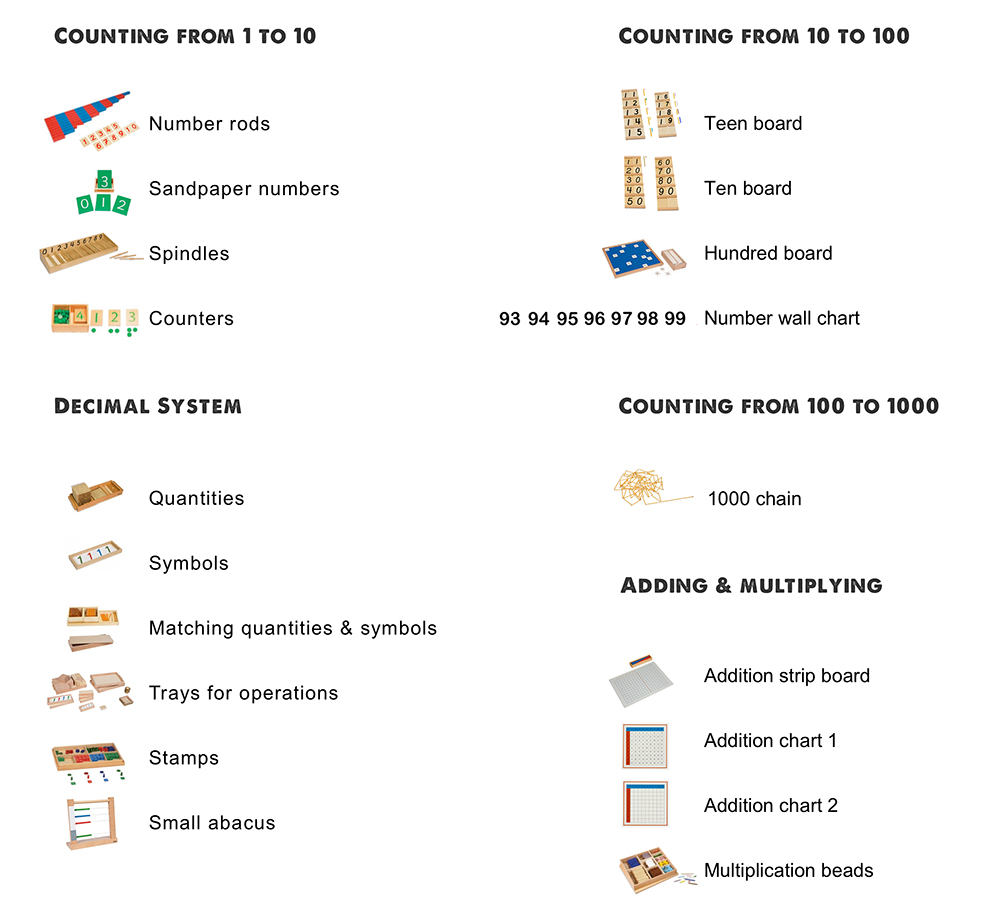Classroom materials
Here is an list of the classroom materials which we provided the children with over the three years of the experiment. They mainly consist of materials developed and progressively enriched by three doctors: Itard, Séguin and Montessori. To support the children in the daily acquisition of their autonomy and their culture, we selected this pedagogical heritage for its effectiveness, its cognitive clarity, its progressive dimension (which was highly pertinent) and its aesthetic qualities. Find out more about these materials.
The list of materials given here is not exhaustive nor is it in any way mandatory. We encourage you to select the activities which suit you best and to supplement the list with any activity which you consider to be pertinent. We consider this list to be a starting point, not an end point.
We didn't use all the pedagogical activities developed by Doctors Itard, Seguin and Montessori. We engaged in a rigorous selection process with the aim of offering fewer activities to the children but ones which were of high quality. We also simplified the demonstrations. Our selection, which we gave careful thought to over the course of three years, constitutes in our view an excellent base for activities aimed at children aged from 3 to 5. However, we strongly encourage you to modify or enrich this base depending on your own personal interests and those of the children you are working with.
Most of the time, there was only one copy of each activity available in order to avoid overloading the classroom and also to encourage the children to choose an activity which genuinely interested them rather than 'copying' the choice of a classmate. However, in the case of activities which arouse a lot of enthusiasm among the children, it might be a very good idea to make several copies available.
Practical activities


You can watch how we presented these activities to the children by watching the videos of each activity. We advise you to present all these activities before the age of 4½. They can be presented from the beginning of the first year of nursery school and ideally up until the middle of the second year of nursery school. You will find more information here on the ages at which these activities can be presented. Older children are much less interested than the little ones in opening and closing clothes pegs, sweeping, buttoning and unbuttoning clothes, etc. The practical activities listed above are no longer challenging enough for most of the children aged over 5. For the older children it might be very fruitful to offer other activities which present a more interesting challenge such as weaving, knitting, looking after a vegetable garden, building huts or making small pieces of wooden furniture, preparing a meal (a fruit or vegetable salad, for example) or making small items of clothing, etc.
Refining the senses & Discovering culture


You can watch how we presented these activities to the children by watching the videos on sense refinement, on music, on geometry and on geography. You can also find further information on these various subjects by viewing the teaching resources videos.
In addition to these activities, we strongly recommend that you provide a botany corner featuring, for example, tree leaves found in the woods, which can be laminated and displayed in the corner with the names of the trees which they come from. You can also include in this space books and prints of plants, tree leaves, etc. and an attractive framed photograph on the wall. A wicker basket can also be used for leaves, chestnuts and other finds the children have made in the playground or on a trip. For the geography corner we put up a world map on which the children could read the country names. We also put coloured drawing pins (during the group activities) on the places where the children had travelled to with their parents.
Mathematics


You can watch how we presented these activities to the children by viewing the videos on mathematics. You can also find out more by viewing the teaching resources videos.
Language


The language resources which we designed were based on the writings of Dr Maria Montessori, on cognitive, affective and social neuroscience and on the specific characteristics of the French language. When we had to make choices, we were also guided by the enthusiasm shown by the children.
It is important for the language area to be complemented by a library corner which is bright, spacious and well-ordered. You can watch how we presented these activities to the children by viewing the videos on language. You can also find out more by viewing the teaching resources videos.
Art activities


